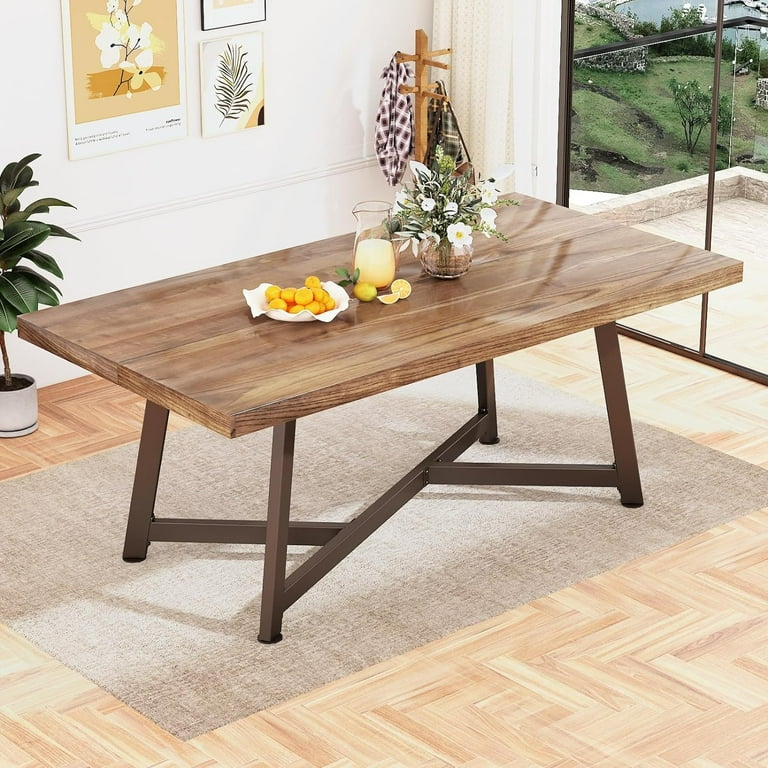Why Custom Dining Room Table Legs Are Worth the Investment
Wiki Article
From Typical to Modern: Discover the Suitable Dining Room Table Legs for Your Style
While timeless styles such as cabriole and turned legs evoke a sense of classic refinement, contemporary designs like barrette and geometric alternatives provide a possibility for striking aesthetic rate of interest. As you consider these elements, the concern continues to be: just how can you flawlessly integrate these varied leg styles to produce a harmonious dining experience?Comprehending Table Leg Styles
The range of dining-room table leg designs can substantially affect both the looks and capability of the space. Each leg design adds one-of-a-kind useful functions and visual elements, accommodating diverse layout choices and usage requirements. Recognizing these designs is critical for choosing the best table that lines up with your general interior decoration vision.For circumstances, tapered legs supply a tidy, timeless look that can improve an area's elegance, while stand bases provide security and make the most of legroom, making them excellent for smaller sized areas. Hairpin legs, a trademark of mid-century modern layout, introduce an industrial panache, enabling an airy, open feeling. Likewise, trestle legs stimulate rustic appeal, supplying robust support and a feeling of eternity.
Wood legs can bring heat and structure, whereas metal options often share a smooth, modern vibe. Ultimately, comprehending table leg designs is essential for creating a natural dining area that mirrors individual style while guaranteeing functionality and comfort.
Traditional Table Leg Options
When choosing dining space table legs, traditional options commonly personify classic style and craftsmanship. These layouts show an abundant heritage and a dedication to quality, making them perfect for those that appreciate traditional appearances.Among one of the most legendary conventional leg designs is the cabriole leg, defined by its elegant curved shape. This layout commonly includes ornamental makings and is most generally located in Queen Anne and Chippendale furnishings. One more prominent choice is the transformed leg, which flaunts a collection of smooth, rounded forms that supply a timeless look while preserving security.
Additionally, the straight leg, while simple, offers a basic and sturdy structure that can mix flawlessly with a range of tabletop styles. For those attracted to ornate detailing, claw-and-ball feet legs evoke a sense of majesty and can function as a sensational prime focus in any type of eating area.
Lastly, stand bases, although not purely legs, give an alternative typical option that permits ample legroom and can be magnificently sculpted. Each of these traditional leg designs adds to the general ambiance of a dining area, marrying function with aesthetic charm.

Modern Table Leg Layouts
Modern table leg layouts supply a varied series of styles that highlight innovative materials and tidy lines. These designs usually focus on performance while working as striking focal points within a dining room. Minimal have a peek at this site appearances are widespread, with legs crafted from products such as steel, glass, and crafted wood, which add to a modern and airy feeling.One preferred design is the barrette leg, defined by its slim, tapered structure that offers security without frustrating the table top (dining room table legs). This style is often found in mid-century contemporary furniture and can effortlessly complement numerous eating table shapes. An additional trend is making click use of geometric shapes, where legs might tackle unbalanced or angular types, adding visual interest and a touch of artistry

Blending Designs for Special Areas
Commonly, property owners look for to develop special eating spaces that reflect their individual design by blending various design elements. This approach permits for the incorporation of varied aesthetic appeals, causing a harmonious yet unique setting. For instance, matching a rustic wooden table with streamlined, modern-day steel legs can produce an eye-catching contrast that raises the room's total charm.Additionally, incorporating vintage table legs with contemporary tabletops can evoke a sense of background while preserving a contemporary sensibility. Such mixes not only showcase individual preference but additionally motivate creative thinking, permitting homeowners to curate an area that really feels both personal and welcoming.
Color plays a critical duty in this mixing procedure; selecting table legs that complement or contrast with the existing color pattern can boost visual rate of interest. Whitewashed legs can soften the daring of a dark table surface area, developing a balanced aesthetic.
Tips for Selecting the Right Legs
Picking the right table legs is necessary for attaining both functionality and visual appeal in your dining area. Begin by taking into consideration the total style of your area. Standard setups gain from legs that include intricate makings or turned styles, while modern areas may ask for smooth, minimal designs.Next, evaluate the height and security have a peek at this site of the legs. dining room table legs. Standard table vary between 28 to 30 inches in elevation, so guarantee the legs match this dimension for comfort. Furthermore, durable products, such as hardwood or metal, can enhance security and durability
Review the leg shape too-- alternatives consist of right, tapered, or pedestal layouts. Straight legs supply a traditional look, while tapered legs can add a touch of beauty. Pedestal bases provide ample legroom and are excellent for smaller sized rooms.
Conclusion
In summary, choosing the optimal dining area table legs needs cautious factor to consider of both contemporary and conventional styles. By balancing leg design, height, and material with the overall design, a natural and welcoming environment can be attained.The selection of dining space table leg designs can considerably influence both the aesthetics and capability of the area. Eventually, understanding table leg styles is crucial for developing a natural dining location that reflects personal design while making certain usefulness and comfort.One of the most renowned traditional leg styles is the cabriole leg, identified by its graceful bent shape. Straight legs supply a timeless look, while conical legs can add a touch of beauty.In recap, picking the ideal dining area table legs needs cautious factor to consider of both modern-day and typical designs.
Report this wiki page